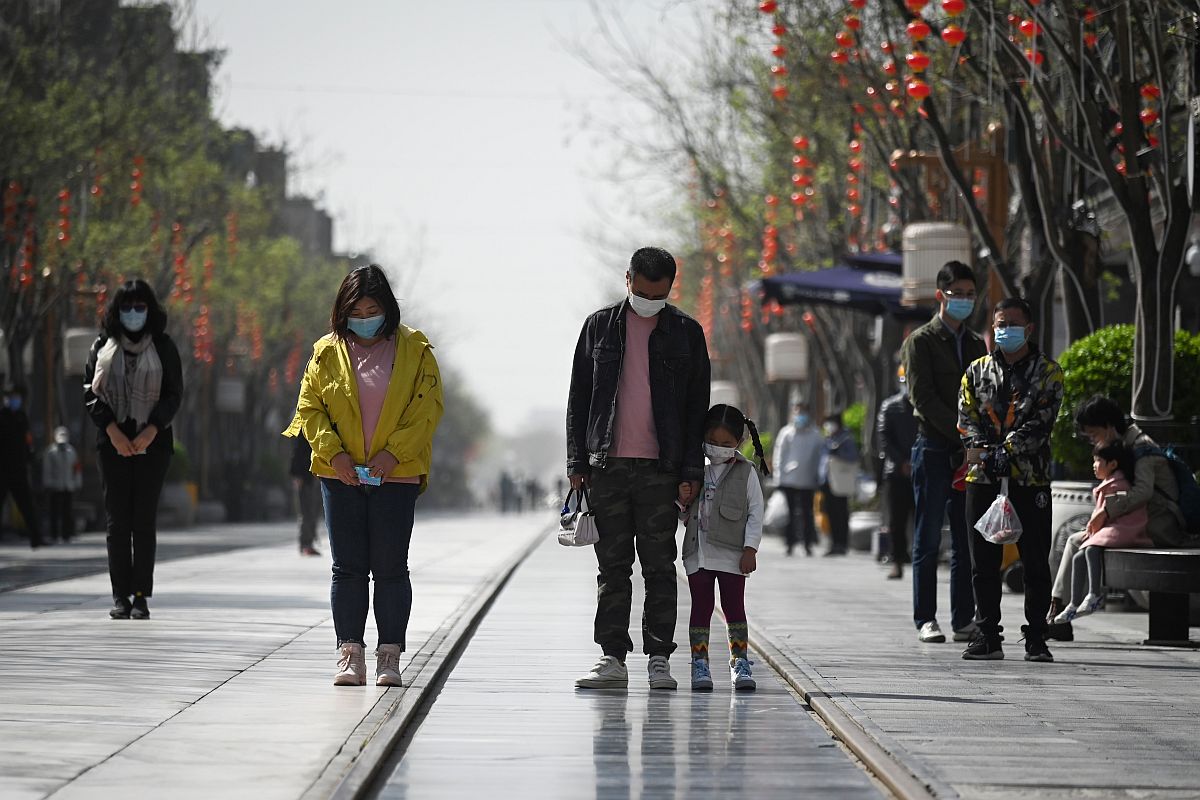Still unexplained
The hunt for the origins of Covid-19 has for the past four years been a tangled web of politics, power struggles, and international finger-pointing.
In an analysis published on March 29, WHO wrote that aerosol transmission was only known to occur during particular medical treatments that required assisted breathing.

People wearing face masks mourn patients and medical staff killed by Coronavirus during a nationwide three minutes silence along a business street in Beijing. (Photo: AFP)
The new Coronavirus might spread through normal breathing and speaking, a top US scientist said Friday suggesting that the virus that causes COVID-19 infection is airborne.
Anthony Fauci, head of infectious diseases at the National Institutes of Health, told Fox News the guidance on masks would be changed “because of some recent information that the virus can actually be spread even when people just speak, as opposed to coughing and sneezing.”
Until now, US health agencies have said that the primary pathway of transmission is respiratory droplets, about one millimeter in diameter, expelled by sick people when they sneeze or cough.
Advertisement
These quickly fall to the ground around a meter away.
But if the virus can be suspended in the ultrafine mist we expel when we exhale, in other words an aerosol, it becomes much harder to prevent its spread, which in turn is an argument in favor of everyone covering their faces.
However, Dr Harvey Fineberg — chair of the National Academies of Sciences, Engineering, and Medicine’s standing committee of experts to inform the US federal government on critical science and policy issues related to emerging infectious diseases and other public health threats — has said that while the current specific research is limited, the results of available studies are consistent with aerosolisation of virus from normal breathing.
So far, the World Health Organization (WHO) has been more cautious on the airborne threat of COVID-19 coronavirus.
In an analysis published on March 29, it wrote that aerosol transmission was only known to occur during particular medical treatments that required assisted breathing.
On the recent preliminary research, such as the University of Nebraska’s paper, the WHO cautioned that the detection of the Coronavirus’ genetic code in patient’s rooms did not necessarily amount to viable amounts of the pathogen that could be transmitted onward.
Respiratory infections can be transmitted through droplets of different sizes, according to the WHO.
Social distancing is recommended because droplet transmission occurs when you have close contact (within one metre) with a person who has respiratory symptoms such as coughing or sneezing, which may spread these potentially infectious droplets, typically 5-10 microns in size, to your body.
Touching surfaces or objects in the immediate environment around the infected person can lead to transmission, state-run China Daily quoted the WHO publication as saying.
Airborne transmission is different from droplet transmission, as it refers to the presence of microbes within droplet nuclei, which are generally considered to be the smaller particles of less than 5 microns in diameter, and which can remain in the air for long periods of time and be transmitted to others over distances greater than one metre, it said.
According to the publication, no cases of transmission by air were reported in an analysis of 75,465 patients with the Coronavirus in China.
The Coronavirus pandemic has infected over 1.1 million people worldwide and claimed more than 59,000 lives.
Advertisement